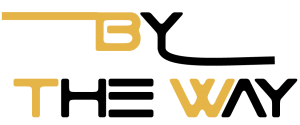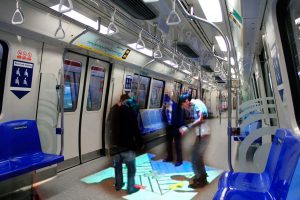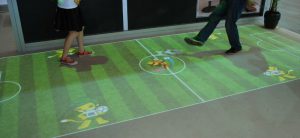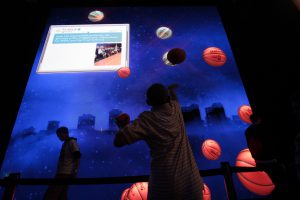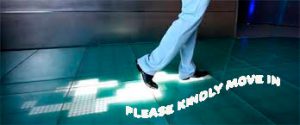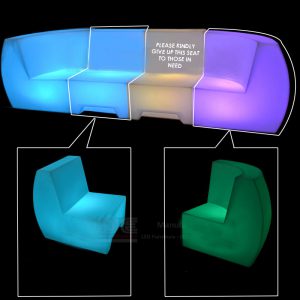Part 1: Write a response to the exhibition “Future World”. Keep in mind the following questions – What is experience design and what are the possibilities of responsive environments? How might this change the way we think about the world around us and the ways that we communicate with each other?
I visited “Future World” during March when the exhibition just started and the experience was one that I could never forget. This exhibition was not like the others as it felt more like an experience instead. It felt like entering into a whole new world with another spectrum of possibilities! Personally, I like the very moment when one step into the exhibition, where the setting is dark and cooling, giving a sense that one has just stepped into their land of dream, surrounded by kaleidoscope of colors!
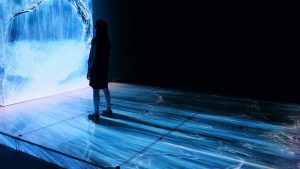
There are several exhibition pieces that are worth mentioning. The first one would be the “Circulum Formosa”, an interactive digital installation based on a huge LED sculpture. What I find amazing about this particular piece is the fact that setting displayed is never static. It changes accordingly with external data, based on the real-time weather condition, temperature, time and season. It exemplifies very well how the use of technology could imitate nature to give people the same experience they would have felt in real nature environment. I remembered when I stepped closer to the waterfall setting, it was rather mind-blowing how I could felt cool wind gushes on my face and the sound of rushing waterfall, and in that moment, I could really imagine myself standing right in front of a waterfall.
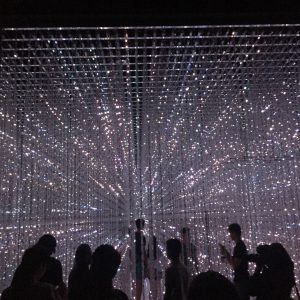
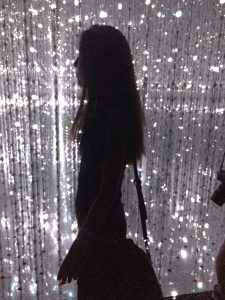
The next piece that left deep impression on me was definitely the “Crystal Universe”. This interactive 3-D light space gave users a surreal feeling as one would feel that she or he is right at the center of the universe, becoming one with light and the body of installation. Personally, I felt that this piece was extremely poetic in every other way. It makes one feel like immersing in a sea of star at night, reminding one of the art piece The Starry Night by Vincent van Gogh. Personally, I think this is a piece about hope, giving light in one’s path. Interestingly, viewers can change the Crystal Universe through access to their smartphone to give them a firsthand experience!
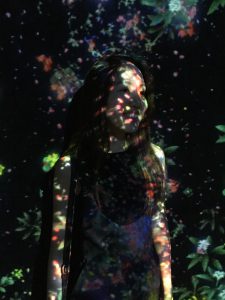
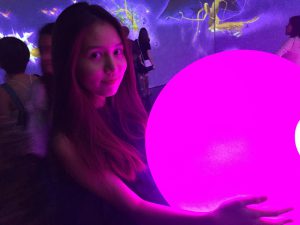
From the two exhibitions that I have mentioned above, I have learnt that understanding the users plays a crucial role of what experience design is. Only through understanding what and how users feel in a particular setting or situation, then can designing this “experience” be felt in the way the designers would want to convey. (for e.g. the experience one would have felt standing at the waterfall) By adding the element of responsive environment gives another layer of interactivity to users as they would feel “as one”, together in the environment being designed. All of this interestingly makes me reflect about the way we see world and how we communicate to each other. Drawing links to experience design, the way we see the world differs from one another. It is subjective. Hence, the way we respond to them are different otherwise and every experience that we go through varies as a result. This is the same as experience design too, as every experience being designed might be interpreted or “felt” differently by different users. And that is what makes experience design amazing as it is so versatile, and contains endless layers of possibilities.
Part 3: Find 3 examples of a product/project that you think are thoughtfully designed user experience.
Product
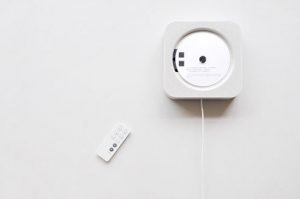
- Wall-mounted CD player by Naoto Fukasawa
I picked this CD hung player designed by Naoto Fukasawa as it is a great design, that is not only functional, simple and aesthetically pleasing. In fact this design has gained its recognition with design awards. My first impression on this design was how it resembles a fan, especially when the CD revolves. However, with a closer look, one will realise that it is actually a CD player. I think it is amazing how there is not even one control button on the CD player. Instead, user will simply play by pulling the cord strung below.
Service
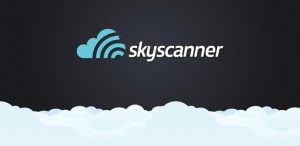
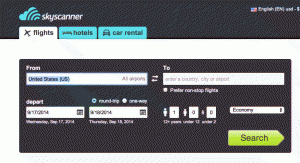
2. SkyScanner
The next brilliant design is the skyscanner website/app service. It provides a very convenient way to compare flights, flight timings or pricings all across the different airlines. The interface design is very friendly as it is intuitive, whereby even first-time users are aware of how the website procedure works.
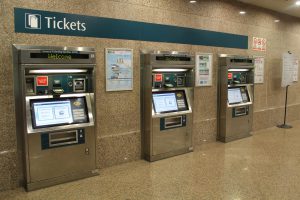
3. MRT Ticketing Machine
The MRT Ticketing Machine is no doubt a great design. The user-friendly interface allows users, be it first-time users or those from various background speaking different languages, to know how to go about buying or top-up train tickets in just a few minutes time. It is indeed a good solution to ease the once long ticketing queue problem in the past.
Part 4, Reading
Designing for the Digital Age: Creating Human-Centered Products and Services, Chapter 1 Goal-Directed Products and Services, by Kim Goodwin
Goodwin’s interpretations to differentiate various designs is interesting and in fact, mind-blowing as some of these questions are no doubt questions that I would often find asking myself sometime. For instance, I have learnt that interaction design is definitely not to be confused with related disciplines known as HCI, human factors or, informally, usability. Another viewpoint that I find interesting that Goodwin has argued is that experience design, as people would refer to human-centered product and service design, is presumptuous. This is because we design every aspect of the environment to encourage an optimal experience, but since every individual has their own attitudes and perceptions to any situations, designers are unable to determine exactly what experience someone has. And hence, product design, as a service is still the end product of the design effort. I find this point rather mind-opening and make me think deeper and further as to how experience design is defined as.
Next, this chapter focuses mainly on Goal-Directed Design, which is a set of tools and best practices developed by Alan Cooper. The Goal-Directed process is broken down into the following steps:
- Project Planning
- Research
- Modeling
- Requirements Definition
- Framework Definition
- Detailed Design
- Implementation Support
While I believe that by having Goal-Directed process making can be deemed as the “most” effective or efficient, I think that it is also important for designers to know him or herself as to what is the best way to work. I think every designer has different working style or ethics, and by fixating on one design method can be rather restricting in a sense. Ultimately, what is important is how designers are able to find his or her own best creative space or method, and work towards it. (given under the set of criteria appointed to them) After all, creativity has no limits.
Qns1: Does working/designing under constraints limits or dampens one’s creativity? Is there a way to tackle this challenge?
Qns2: Does working under a design framework like Goal-directed method limits or hinders the time for designers to continue exploring for more ideas? (due to possible time constraints to follow all the steps)


